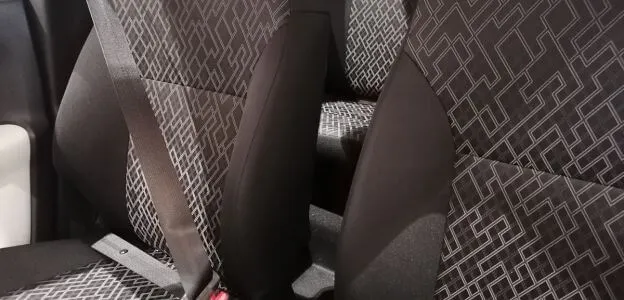When you get behind the wheel, it’s essential to stay vigilant because accidents can happen in an instant. This is why cars are equipped with numerous safety features, including seat belts. Seat belts are mandatory, and fastening them has become second nature to most drivers and passengers. However, a small detail on your seat belts might have caught your attention: the little fabric loops next to the main buckle.
These loops, known as “energy management buckles,” play a crucial role in ensuring your safety while driving. This article will explain their importance and function, particularly in the context of driving in Africa.
Understanding Energy Management Buckles
Energy management buckles are present on all seat belts except for the driver’s. While they might seem insignificant, they have a significant purpose. These loops feature a row of small stitches designed to rupture under the pressure of a hard impact, such as during an accident or sudden braking. This intentional design allows the seat belt to extend slightly, providing a few extra centimeters of slack. This slack helps cushion the shock, reducing the force exerted on your body, and minimizing the risk of serious injury.
Extra Security During Impact
Imagine you are driving on one of Africa’s busy roads, and suddenly, you have to brake hard or are involved in a collision. Your body is thrust forward with great force. This is where energy management buckles come into play. The stitches on the fabric loops are designed to break under significant pressure, allowing the seat belt to stretch slightly. This extra stretch reduces the impact force on your chest and shoulders, effectively cushioning the blow and potentially saving you from severe injury.
Why the Driver’s Seat Belt is Different?
You might wonder why the driver’s seat belt does not have an energy management buckle. The reason is simple and based on safety priorities. If the driver’s seat belt were to extend during a collision, even slightly, it could cause the driver to move forward too much, increasing the risk of hitting the steering wheel.
In a serious collision, every millimeter counts, and the proximity of the driver to the steering wheel means that any extra movement could result in head injuries. Instead, the driver’s seat belt features a small button located just below the buckle. This button helps prevent any risk of tearing during an impact, ensuring the driver remains securely restrained.
The Importance of Seat Belt Maintenance
In Africa, where road conditions can vary greatly, ensuring that your seat belts are in good working condition is essential. Regularly check for any signs of wear and tear on the seat belts, especially around the energy management buckles and the driver’s buckle. If you notice any damage, have the seat belts inspected and replaced by a professional to maintain their effectiveness.
Conclusion
The small fabric loops on your seat belts are more than just a minor detail; they are a vital safety feature designed to protect you in the event of an accident. Understanding their function can help you appreciate the advanced safety measures built into your vehicle. As you drive across Africa’s diverse terrains, always remember to fasten your seat belt and ensure it is in good condition. This simple action can significantly enhance your safety and reduce the risk of injury.




